#Virginie Gautreau
Text


54 notes
·
View notes
Text

10 notes
·
View notes
Text
John Singer Sargent, Madame Gautreau, 1884
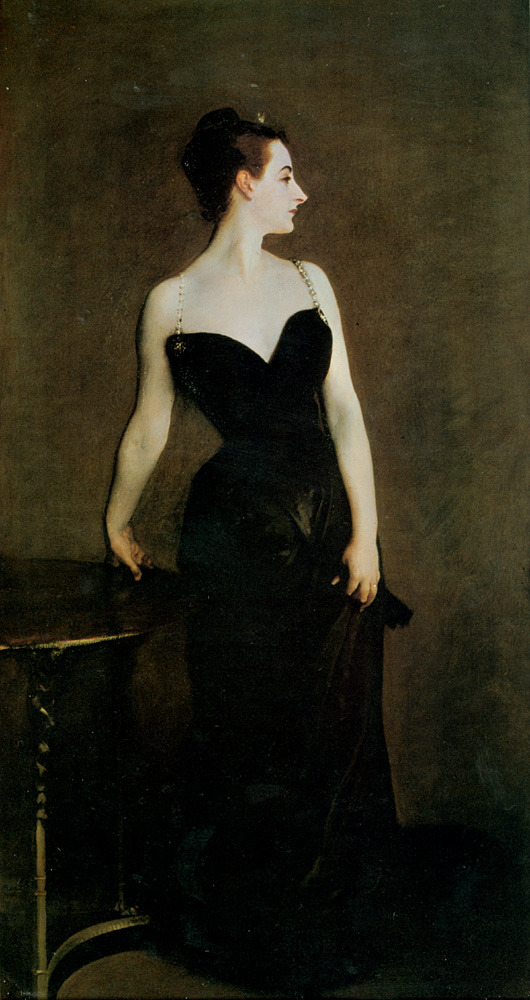
Virginie Amélie Avegno Gautreau.
#John Singer Sargent#Madame Gautreau#1884#Virginie Amélie Avegno Gautreau#male artist#american#1880s
2 notes
·
View notes
Text
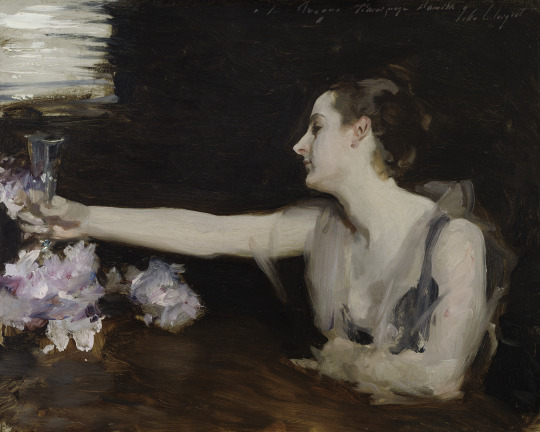
Madame Gautreau drinking a toast
2 notes
·
View notes
Text
youtube
This documentary is wonderful, as it talks about how real unbridled misogyny can destroy a woman!
This is the real thing, not the pretend crap uttered with abandon by the #metoo mob!
0 notes
Text
youtube
Horses "The Destruction of Madame X" (2023)
#john singer sargent#virginie amelie avegno gautreau#art history#art scandal#madame x#social commentary#paris#1880s#video essay#horses#video#2023#Youtube
1 note
·
View note
Video
youtube
1 note
·
View note
Text
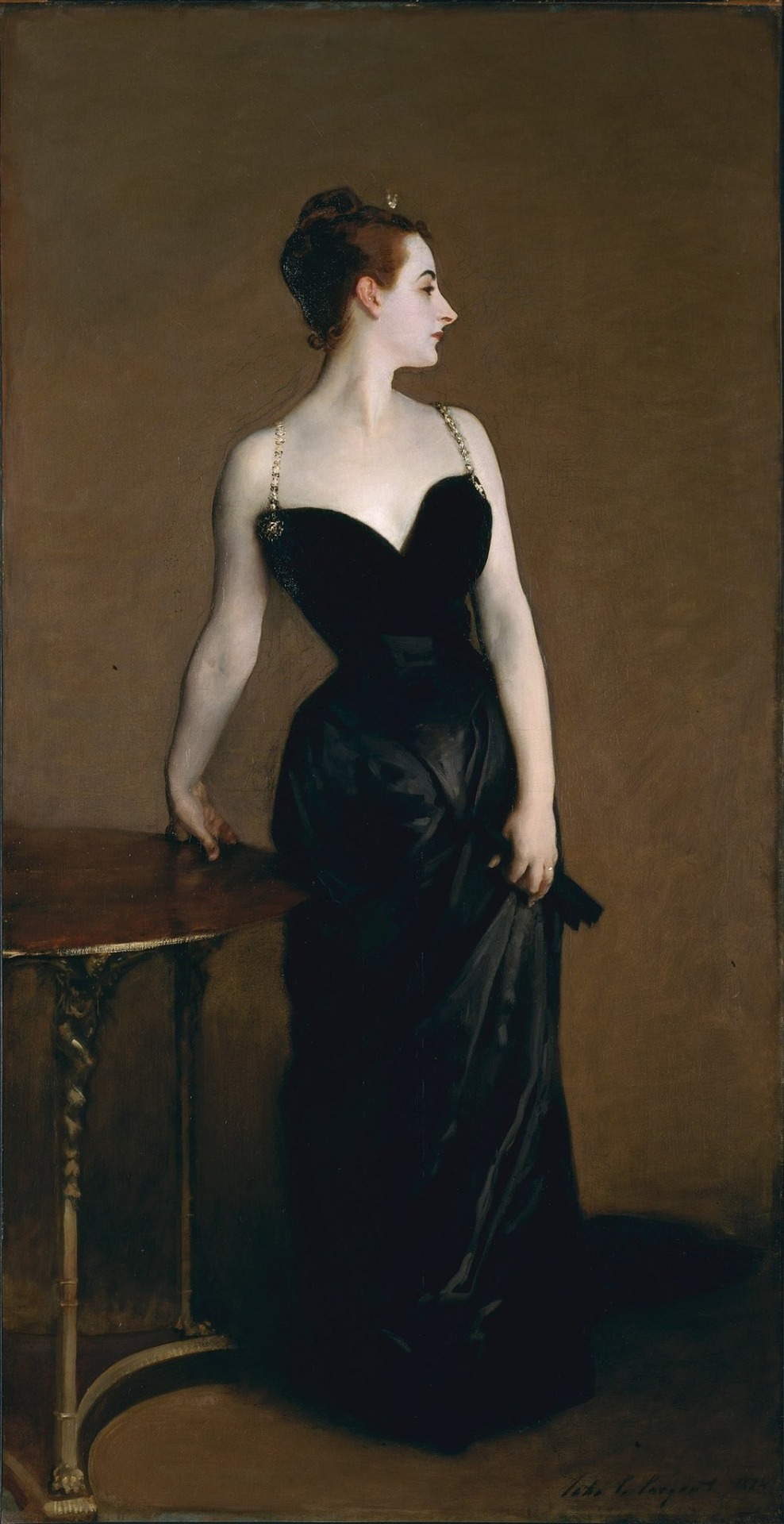
1 note
·
View note
Text
The Story of Madame X

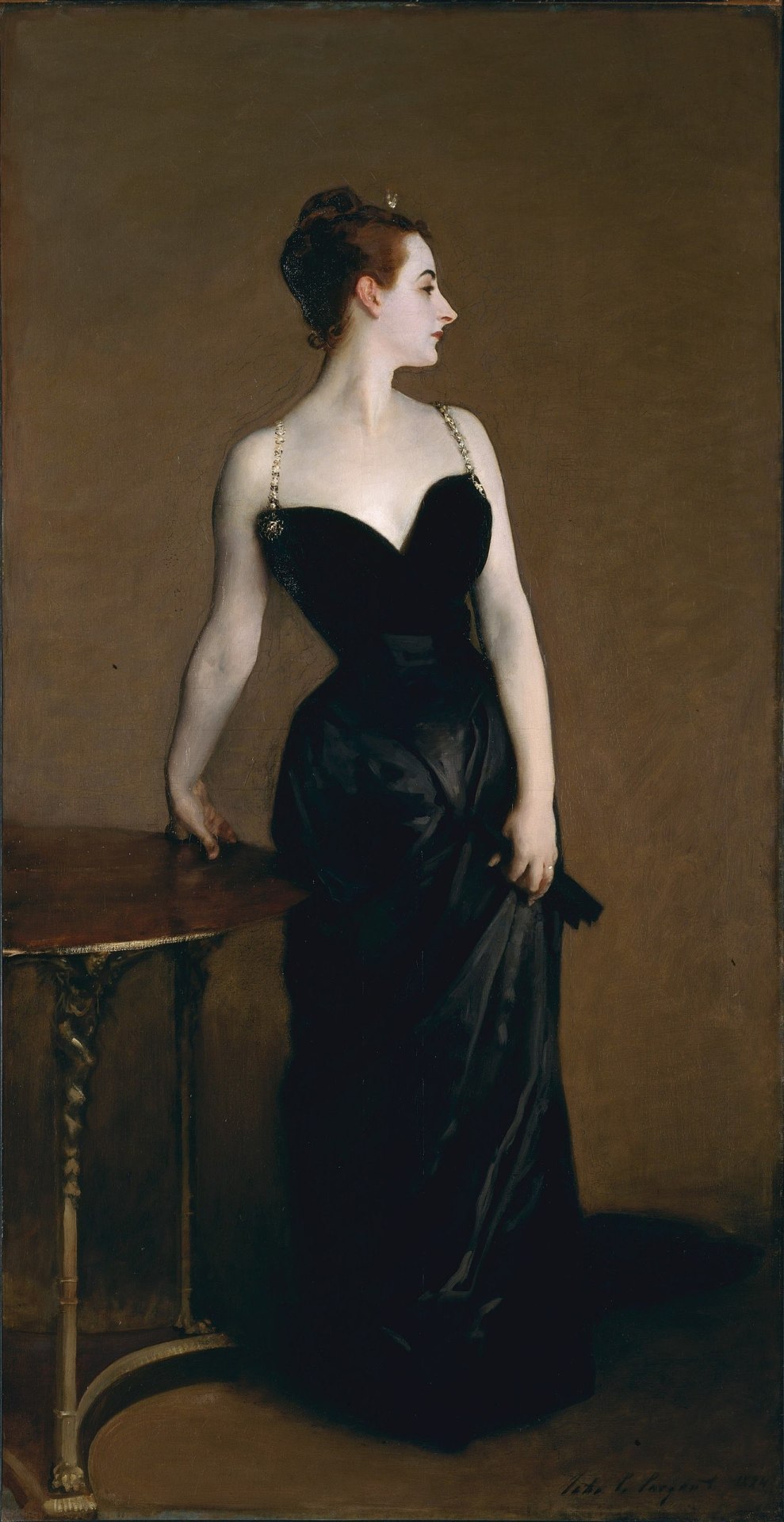

John Singer Sargent (American, 1856–1925) • Madame X (Virginie Amélie Avegno Gautreau) • 1883-84 • Metropolitan Museum of Art
Photograph of Sargent with what is perhaps his most famous portrait – that of the very wealthy socialite, Madame Gautreau. This is not the original version, though; the one that shocked the art world in 1884 when it was shown at the Paris Salon.


Above is a sketch for the Gautreau portrait. At some point Sargent decided to paint the right strap of her dress seductively off her shoulder. When the portrait was shown in Paris, there was an uproar of disapproval. Madame Gautreau was, apparently, already rumored to be an adultress. Her Singer portrait only added emphasis to the public's criticism of her character. According to the gallery card at the Museum of Fine Arts, Boston (the painting was on loan from the MET), Gautreau very much liked the painting. What neither she nor Sargent predicted was that it would cause such a stir and be the cause of much conversation, mostly derisive, in the drawing rooms of Paris high society.
Sargent was so upset by the reaction at the Salon and the ensuing buzz that he took the painting back to his studio and repainted the strap in its proper place on the shoulder.
The painting was eventually sold on the condition that its subject not be revealed in the title. It was to be called Madame X.
Sources:
Museum of Fine Arts, Boston
Metropolitan Museum of Art
Arty: Why Madame X Scandalized the Art World by Alina Cohen
#art#painting#fine art#art history#madame x#john singer sargent#american renaissance#american artist#oil painting#amélie gautreau#society portrait#portrait#female portrait#19th century art#museum of fine arts boston#metropolitan museum of art#famous paintings#pagan sphinx art blog#art history lesson
67 notes
·
View notes
Text

Madame X Madame Pierre Gautreau [Virginie Amélie Avegnol), 1883-84
Oil on canvas
The Louisiana-born wife of a French banker, Amélie Gautreau was admired in Parisian social circles for her arresting appearance, which she enhanced with striking gowns and a rigorous cosmetic regimen. The designer of this splendid satin and velvet dress has not been firmly established, although Mme Gautreau often patronized Maison Félix. One of the most prestigious Parisian rivals to Worth, Félix was admired for slim-fitting gowns and favored by celebrities like Sarah Bernhardt. But what worked for an actress brought Amélie Gautreau's downfall.
Sargent convinced her to pose for a portrait, saying he would make it be "an homage to her beauty." She had been compared to a classical statue, and together, Sargent and his sitter confected a portrait that showed off her figure in a pose reminiscent of ancient sculpture. She called it a masterpiece. But when it was displayed at the Paris Salon in 1884, in its original state with one diamond strap falling from her shoulder, the painting was ridiculed, described as indecent and a sensational, vulgar attempt to garner attention.
A fashion faux pas became a potent symbol of upstart Americans who threatened to topple long-standing national hierarchies of fashion, society, and identity.
34 notes
·
View notes
Text
Deathly Pale
The desire of women for ultra-pale skin didn't end with the Elizabethan era. In Victorian times, women still coveted the look of translucent white skin and applied the same causic, poisonous substances to their face, neck, arms and hands. Turbuculosis was a common cause of death in the era. The look of death was considered romantic for its tragic and poetic beauty. Even if a Victorian woman wasn't charmed by death due to turbuculosis, she still coveted pale, translucent skin. Tanned faces were the result of long hours of work out-of- doors, belonging to the lower classes.
“The death of a beautiful woman is, unquestionably, the most poetical topic in the world.” - Edgar Allan Poe
The two predominant beauty standards were the painted beauty and the natural beauty. The later was the preferred ideal of the average fashionable woman. The methods she employed to achieve good skin and complexion were all in an effort to look natural. The overly painted look was seen as racy - the province of prostitutes and "loose" women.

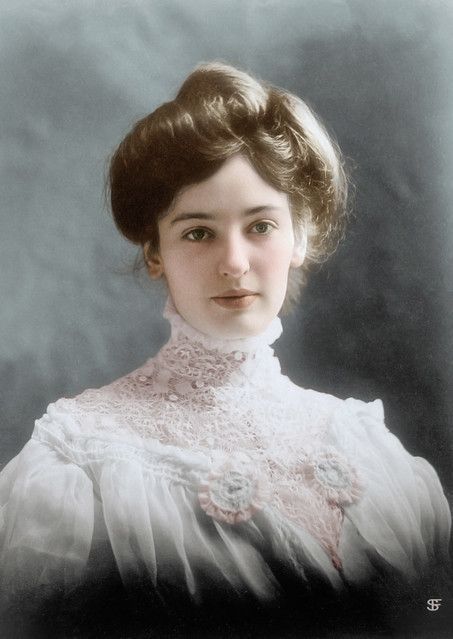
Upon a well-off Victorian woman's dressing table were arsenic, ammonia, and opium, among other toxic substances. The Ugly-girl Papers, Or, Hints for the Toilet was a book published in 1874 that contained a series of beauty articles for Harper's Bazaar. The author recommends coating the face with opium before bed and a brisk wash with ammonia in the morning. How refreshing.
Lotions containing lead were popular for whitening the skin as well as erasing freckles and other blemishes. Complexion wafers containing arsenic were widely advertised. These products were peddled to women as being harmless when, in fact, they caused headaches, nausea, and even paralysis.

To achieve eyes with a seductive gaze, Victorian women used Belladonna or Deadly Nightshade in the form of eye drops, which diluted the pupils. Eye irritation and even blindness were reported symptoms of this practice.
A little color over that deathly white facial palor was usually achieved with beet juice and sometimes, animal blood. It's intriguing to wonder how women came into possession of animal blood, though the answer may be as simple as a purchase from a local vendor. Vermillion, also known as red mercury, was used to tint the lips and was known to be poisonous.
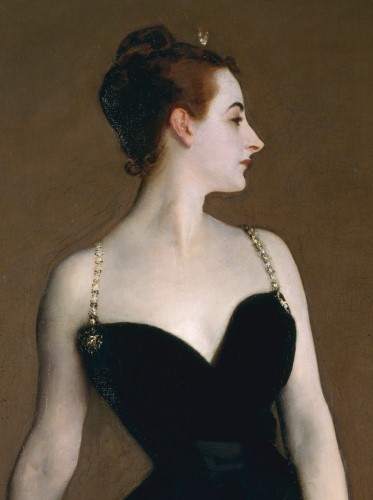
Virginie Gautreau, the subject of the famous John Singer Sargent painting known as Madama X, was not only known to use products to whiten her skin, but was also purported to use indigo dye to paint veins over the ultra-pale veneer of her skin. I haven't found any sound evidence of this, however. What I did read in both The Collector and in an article at minsooki, was that over her arsenic pale skin, Virginie used a lavender powder to counteract the warmth of candlelight.
What's most troubling is that in the face of ample evidence of the health consequences of many of these products, women continued to value the look they provided, over their own health and safety.
References:
• Molly Brown House Museum: Beauty is in the Eye of the Beholder: How Victorians Used Common Poisons to Become Drop Dead Gorgeous
• Awful Forever
• Atlas Obscura
• minsooki.com
• The Collector
#victorian era#history of makeup#victorian beauty standards#poisonous beauty products#madame x portrait#victorian high society
18 notes
·
View notes
Text
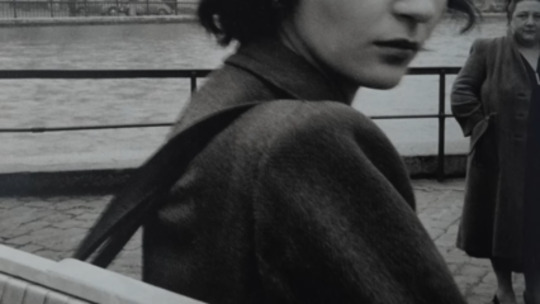



youtube
Virginie Amélie Avegno Gautreau
2 notes
·
View notes
Text
My Own Style Analysis: Ben’s Dream
This was originally posted on Reddit.
*Warning: The following picture may be NSFW, you have been warned*

“I am Fire and Air” Cleopatra, as imagined by Willy Shakespeare
Ever since I saw this scene, I have been thinking about any possible references that were made here. This is by no mean's an organized think piece and I feel pretty okay about this, I was shocked to see the overt sexuality in this scene (and hoped no one was coerced into performing) but I always felt that Maitreyi had the talent and looks to play a 21st Century twist on the classic Film Noir Femme Fatale and felt vindicated here. In fact my mind went to different places which shall be covered here.

Lighting: First thing we notice is the purple lighting used in the scene, both to set the tone for Ben's lust and love for Devi and to enhance both Maitreyi's and Jaren's physical appeal. In fact, aside from being a color that stands for status and heroism, purple is one of Dr. David Rosenau's color-coded pyramid of intimacy (which also incorporates colors which were so darn persistent in the show and used in the final scene of the series); purple symbolizes touch and passion, the former that Ben was yearning from Devi at that moment and the passion that they mutually held for each other in a way that matches the damned wildfires in our Golden State and in their academic competition. It is also noted that the both of them hated it when Ben wasn't talking to Devi, in a scene where they were both in outfits picking up on each other's greens (bonding intimacy) after he rescued her from getting groped by a Fabio reject and when she showed up high at her house and ruined an apple shaped cake. The dark purplish lighting also helps to accentuate Maitreyi's dark skin and the metallics on her lingerie and makeup which add to another part of her fantasy mystique.

Madame X: In the late 19th Century, John Singer Sargent painted a very scandalous portrait of a red-haired socialite named Virginie Gautreau, an American ex-pat and wife of a respectable French banker. This was a woman with a sense of confidence who knew she was beautiful and owned her sexuality, both no-no's in the 20th Century Western World (actually given how society loves to humble a woman with high self-esteem or bravado, have things changed?) and in a time when women were expected to cover themselves up with layers of fabric and decor, she was wearing a simple curve-hugging dress in black that contrast with her very fair skin with metallic straps and instead of looking demure, she looked proud, this scandalized Parisian society and practically ruined Sargent's career and Gautreau's reputation, it wasn't until later that this flop became iconic, inspiring Rita Hayworth's dress in Gilda, the gold-chain Chanel dress, the allure that later LBDs now possess, and dresses worn by Christina Hendricks in Mad Men Season 4 episode "Waldorf Stories" and Post heiress/Mr. Sheffield's cold ass mom Dina Merrill and even Maitreyi herself in real life.

Makeup: Complementing the metallics of the lingerie are Devi's makeup, which is inspired by the very contemporary Euphoria and I argue, the intro to the 1980s James Bond film A View to a Kill with the models in bathed in a dark light to better accentuate the neon colored makeup, nail polish, hair, and weapons that would glow in the dark. Another thing to note is that while Devi's lip gloss enhances the natural pink in them, her eye makeup and manicure are bolder and match her nose ring; this is likely a call back to how the 2020 COVID-19 Pandemic impacted makeup trends in sales, with lipstick taking a dip along with economics (a reversal of a trend that was first noted in the Great Depression) while eye makeup sales soared as people found ways to experiment with different colors and designs while keeping safe with masks. Her look is likely even a shout out to Alexa Demie's Euphoria character Maddy Perez, who like Devi and Maitreyi, is a young WOC and Hollywood newcomer flawlessly portraying a complex, flawed, and charismatic young woman who isn't afraid to go ham. The big thing is that Ben is (thankfully) not Nate Jacobs: both being privileged white boys who've internalized the Patriarchy, but while Ben is obnoxious and hiding his vulnerability and abandonment issues with bravado and only achieved some semblance of popularity through is background and connection to others in the Hot Pocket, Nate however has his toxic traits enabled or even encouraged by his parents and is positively horrifying in his treatment of Jules and Maddy and is the BMOC. But rest assured no one is getting almost strangled after tossing a pot of chili after being slut-shamed.

Flame: Sex has always been symbolized by elements (old films used beaches and other forms of water to imply acts of sex and passion) and fire was used as a metaphor for sexual desire in songs like "Hot Blooded" and "Somethings Burning"; flame is also used to illustrate a fiery temperament, Ben is well aware Devi is a hothead like her father's hero John McEnroe (the fact that the elder white Boomer male and a teenage South Asian girl are validated for their short fuse is amazing) and contrasts with his doting yet cool parents and she also often dresses in warm colors that highlight her looks and her personality. In fact many iconic female characters have been depicted with fiery tempers or strong personalities (think Joan Holloway, any character played by Joan Crawford and Bette Davis and Maureen O'Hara, Trudy Proud, Betty and Veronica). This not only played to male audiences but also to female ones in more misogynistic times....
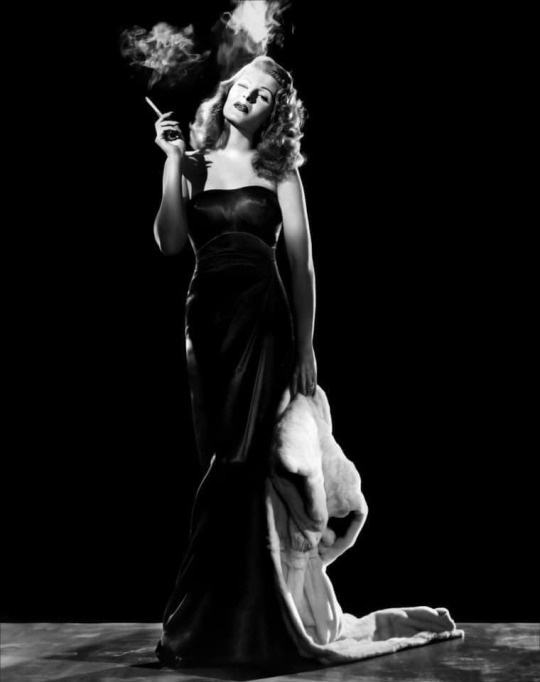
Femme Fatales: As an interviewee in Jackie Stacey's Star Gazing noted "I liked seeing strong, capable, and independent types of female characters, mostly because I wish to be like them" and she, along with many female spectators of films in the 40s and 50s, are in awe of femme fatale's and the career women of the era's films own confidence, intelligence, beauty, and wardrobe. In fact the Femme Fatale comes from a long tradition of men using women as scapegoats for shit hitting the fan and society fearing what would happen if women started to own their intelligence and sexuality (yeah why wouldn't a group that's been long subjugated, abused, and exploited burn down the village?); Devi is no stranger to the feminine being pathologized (blamed for Paxton's accident in Season 2, her grief and temporary disability was mocked, been gaslit by Des...yeah no wonder I channel Lucille Bluth when Devi "damages" something), but wait Toongrrl1990 what about her Unfuckable Nerds moniker? One of the forms of gaslighting patriarchal society has done to women is to liken their worth to their appearance and even when they are pretty, is to gaslight them into thinking they aren't enough: think of how much money the diet industry has made post World War One to now, think of male authors finding ways to insist a woman is "pretty but not beautiful" or say "a model she was far from" or even look at what P.J. O'Rourke says about Bimbos. I grew up in the era where Bridget Jones was considered fat at a size 6 and where people said Bill Clinton (who looked like a basic Boomer Dad to me as a kiddo) could have had "hotter" women (even the one that was a pageant winner wasn't enough or even the freakishly gorgeous and Dorian Gray-esque Monica Lewinsky wasn't enough), in fact go read about Golden Era Hollywood stars and you can see many of the iconic beauties were labeled some form of "unfuckable" (Sophia Loren, Bette Davis, Maureen O'Hara, Grace Kelly, Judy Garland, Meryl Streep). Bosley Croeger, a critic, even critiques Rita Hayworth in Gilda as five and a dime in playing her worldly and street-wise characters.
Devi even lives up to the iconic image of the Femme Fatale's aesthetic: having long wavy hair that bounces and matches her lively nature, her shapely legs that get plenty of focus in Devi's costumes, her quotable "snatched waist, slim thicc queen" figure, quick wit and intellect, and inclination to take risks. As with Madame X, Devi deviates in a major way from the image of the FF, as she is South Asian while the other two female archetypes have been traditionally depicted by white and white-passing women. Devi's image in the scene is a double-edged sword: is it empowering to South Asian girls and WOC and AFABs or is it exploitative as Maitreyi is a young adult and WOC have been historically sexualized? Can girl just express her sexuality because she is feeling herself?
The Femme Fatale is also depicted as being manipulative and intelligent, enough to lead some poor shlubs to their ruin; this is called back to Devi saying "I am so much better at school than you" in the dream and managing to take Ben's shirt off without him noticing her doing so. But as discussed in
u/Professionalish00 brilliant post, Devi is a Hot Mess and this new archetype is somewhat of a victory and evolution from the Femme Fatale, who sighs with relief that complex and sexual women aren't pathologized like she was. Now we can see her own vulnerabilities and see she's just a woman, trying to survive.

Elizabeth Taylor: To quote Tom and Lorenzo, the late cinematic icon and AIDs activist Liz Taylor was a strong woman who had a rich yet messy life, "but she was never the victim that Marilyn [Monroe] was. She took charge of her life and owned her mistakes, but never stopped pursuing the perfect love, demonstrating a sexual aggression that few women of the period would have been comfortable showing". Also as noted by M.E. Lord in The Accidental Feminist, Elizabeth Taylor was a funny gal with a great appetite for living and like Devi, was something of a man eater (Debbie Reynolds noted that Liz stayed friends with many of her exes) and the opposite of a doormat (except in the film Ash Wednesday and Season 2 after Paxton's accident, which was the point). Like Liz's character Martha in Who's Afraid of Virginia Woolf?, Devi possesses an aggression that is still looked down on in women but otherwise tolerated in men (see my notes on McEnroe), encourages Paxton and Kamala to buck the system a la Leslie Benedict in Giant, dealt with having her physical and mental health used as a cudgel against her like Cathy in Suddenly, Last Summer (minus the threat of a big ass ice pick), I would even argue that Liz playing Gloria in Butterfield 8 struck a blow for young women expressing their sexuality (I also love the image in my head of Gloria teaching Devi how to better utilize her hot headedness, especially with lipstick and stilettos) and Devi deep down encourages the best for her loved ones, a passion I saw with Liz Taylor's activism.
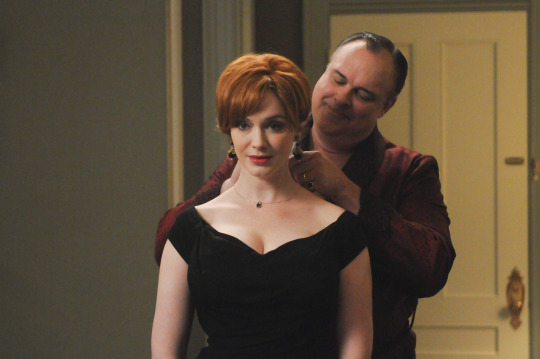
Put the blame on Devi...oops Mame: Alas the night ended with Ben showing up high as a kite at Devi's house, driven by his love and lust for Devi, only to ruin her grandmother's cake and implode Devi and Margot (another complex and charismatic woman) efforts to get their parents together. A misogynist would blame Devi for it, in case you think I am off my rocker, watch Shiny, Happy People on Prime or Fundie Fridays on the Duggars and IBLP, remember what Helen of Troy was blamed for or listen to several episodes of You're Wrong About. I would have liked to see Ben really apologize for the UN and all the other shit, but perhaps getting locked listening to Paris Paloma's "Labour" would help (ooof my cramps right now, dang medical science for not finding a way to diagnose menstrual pain without surgery).
So please read this and give me your thoughts, or I'll cry lol.
#costume design#costume analysis#never have i ever#devi vishwakumar#ben gross#sexuality#female archetypes#femme fatale#madame x#women of color#iconic women#deep dive#benvi#feminist reading#misogyny#male gaze#female sexuality#hot mess#women in media#poc in media
5 notes
·
View notes
Note
I was really hoping for a madame x to appear at the gala :( do you know if I just missed it?
Unfortunately no one appeared to use it as inspiration, which is a shame since it's in the MET! Plus the subject, Virginie Gautreau, was an American expat. I can see the argument that it's kind of low hanging fruit in terms of inspiration, but it's a truly iconic piece of art history and would be easy to update for a theme like Gilded Glamour.
39 notes
·
View notes
Text

justineportraits
John Singer Sargent, Madame X (Virginie Amélie Avegno Gautreau) 1884
2 notes
·
View notes
Text
virginie amelie avegno gautreau you are so important to me.
0 notes